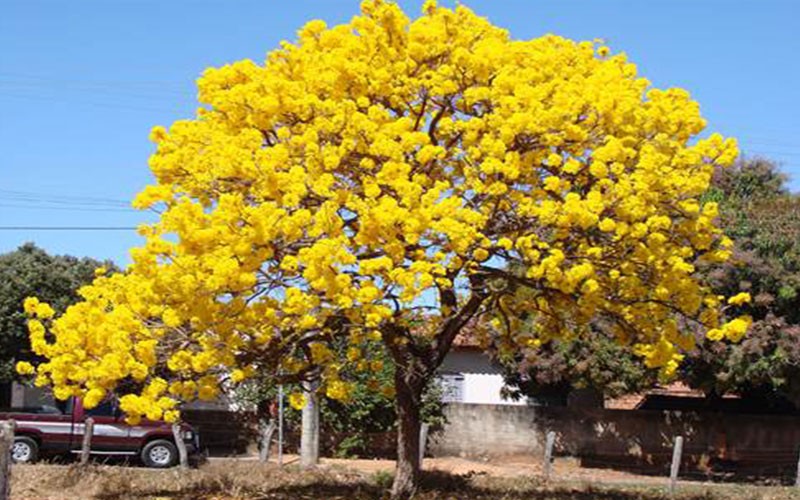
Discover the Beauty and Versatility of Tabebuia Trees: A Guide to Growing and Caring for Trumpet Trees
Tabebuia, also known as trumpet trees or trumpet flowers, is a genus of flowering trees in the family Bignoniaceae. These trees are native to tropical and subtropical regions of the Americas, and are known for their vibrant and showy blooms.
One of the most striking features of Tabebuia trees is their large, trumpet-shaped flowers. These flowers can range in color from pink to yellow to purple, and they often bloom in abundance, covering the entire tree in a blanket of color. The timing of their blooming also varies among species, some are early bloomers while some are late bloomers, so it is a tree that can be enjoyed throughout the year.
Tabebuia trees are not only beautiful, but they also have a variety of uses. Some species have medicinal properties and have been used in traditional medicine to treat a range of ailments, including fever, inflammation, and skin conditions. Additionally, certain species of Tabebuia are used as a source of timber. The wood is hard and durable, making it suitable for construction and furniture-making.
In addition to their ornamental and practical uses, Tabebuia trees are also important for the environment. They provide food and shelter for a variety of wildlife, including birds, butterflies, and bees. They also help to stabilize soil and prevent erosion.
Tabebuia trees are relatively easy to care for, and they are well suited to a wide range of climates. They prefer well-draining soil and full sun, and they can tolerate a wide range of temperatures. Some species of Tabebuia are also drought-tolerant, making them an excellent choice for low-water landscapes.
In conclusion, Tabebuia trees are a beautiful and versatile addition to any landscape. Their vibrant flowers, medicinal properties, and environmental benefits make them a valuable asset to any garden. Whether you are looking to add a splash of color to your yard or you are interested in growing a tree with practical uses, Tabebuia is a great choice.

Tabebuia trees are relatively easy to care for, but there are a few key things to keep in mind in order to ensure that your tree thrives.
- Sunlight: Tabebuia trees prefer full sun, so choose a location that receives at least six hours of direct sunlight per day. If your tree is not getting enough sunlight, it may not bloom as profusely or may struggle to grow.
- Soil: Tabebuia trees prefer well-draining soil that is rich in organic matter. If your soil is heavy or clay-like, you may need to amend it with compost or other organic matter to improve drainage.
- Watering: Tabebuia trees are drought-tolerant, but they will benefit from regular watering during periods of prolonged dryness. Be careful not to over-water, as this can lead to root rot.
- Fertilizing: Tabebuia trees do not require frequent fertilization, but a light application of a balanced fertilizer once or twice per year can help to promote healthy growth and vigorous blooming.
- Pruning: Tabebuia trees do not require regular pruning, but you can remove dead or damaged branches as needed. If you are planning to shape your tree, it is best to prune it after it finishes blooming.
- Pest and Disease: Tabebuia trees are generally resistant to pests and diseases, but they can be affected by pests like scale insects, whiteflies, and aphids. If you notice any signs of infestation, it is best to contact a professional for advice on how to treat the problem.
By following these simple care guidelines, you can help ensure that your Tabebuia tree thrives and provides you with beautiful blooms and lush foliage for many years to come.